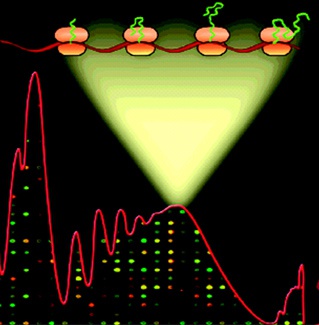The Morris Lab
Examples of Research Projects
Regulation of mRNA translation into protein provides a mechanism for a cell to rapidly and massively alter its proteome in response to changes in the
physical, chemical and biological environment. Translational control plays an important role throughout nature, from unicellular organisms to Metazoans.
How is the translation of individual mRNAs coordinated across a transcriptome to form regulatory networks? The exploration of this important question
has necessitated the development of tools for evaluating translational control at the genome scale. Through these studies, using Saccharomyces cerevisiae
as a model organism, we have found groups of functionally related mRNAs that are poorly translated in non-stressed cells, but are poised to recruit
ribosomes in response to the appropriate external stimulus (Serikawa et al., 2003;MacKay et al., 2004). Examples of these classes of poised transcripts
are those that encode proteins involved in cellular responses to mating pheromone, nitrogen starvation and osmotic stress. The tools that were developed in
yeast are now being applying to these issues in mammalian cells and tissues. For example, using these approaches we have discovered that a protein kinase
involved in cell motility is rapidly upregulated translationally as monocytes attach to a substratum (Fox et al., 2007) and a putative hierarchical network of
translational control during ES cell differentiation (Sampath et al., 2008). Current application of these approaches are in gaining understanding of the
regulatory interactions beteween a tumor and its cellular environment and the regulation of protein synthesis associated with plasticity in the central nervous
system related to learning and memory.
Selected Publications:
Bickel, K.S.and Morris, D.R. Silencing the transcriptome's dark matter: mechanisms for suppressing translation of intergenic transcripts. Mol. Cell 22, 309-316 (2006).
Bickel, K.S.and Morris, D.R. Role of the transcription activator, Ste12p, as a repressor of PRY3 expression. Mol. Cell. Biol. 26, 7901-7912 (2006).
Flory,M.R., Lee,H., Bonneau,R., Mallick,P., Serikawa,K., Morris,D.R., and Aebersold,R. Quantitative proteomic analysis of the budding yeast cell cycle using acid-cleavable
isotope-coded affinity tag reagents. Proteomics. 6, 6146-6157 (2006).
Fox, R., Nhan, T.Q., Law, G.L., Morris, D.R., Liles, W.C., and Schwartz, S.M. mTOR-mediated translational control of ROCK-1 is a pivotal control point in the activation of
macrophages, EMBO J. 26, 505-515 (2007).
Law, G.L., Bickel, K.S., MacKay, V.L., and Morris, D.R. The Under-Translated Transcriptome Reveals Widespread Translational Silencing by Alternative 5’ Transcript
Leaders. Genome Biol. 6, R111 (2005).
MacKay, V.L., X.Li, M.R.Flory, E.Turcott, G.L.Law, K.A.Serikawa, X.L.Xu, H.Lee, D.R.Goodlett, R.Aebersold, L.P.Zhao, and D.R.Morris. Gene expression in yeast
responding to mating pheromone: Analysis by high-resolution translation state analysis and quantitative proteomics. Mol. Cell. Proteomics 3, 478-489 (2004).
Sampath, S., Pritchard, D.K., Pabon, L, Reinecke, H., Schwartz, S.M., Morris, D.R., Murry, C.E. A Hierarchical Network Controls Protein Translation during Murine
Embryonic Stem Cell Self-Renewal and Differentiation. Cell Stem Cell 2, 448-460 (2008).
Serikawa, K.A., X.L.Xu, V.L.MacKay, G.L.Law, Q.Zong, L.P.Zhao, R.Bumgarrner, and D.R.Morris. The transcriptome and its translation during recovery from cell-cycle
arrest in Saccharomyces cerevisiae. Mol. Cell. Proteomics 2, 191-204 (2003).




